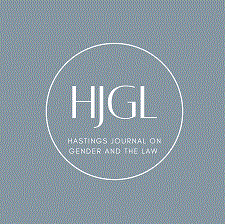
Intersectional Resistance: A Case Study on Crimmigration and Lessons for Organizing in the Trump Era
Abstract
Increasingly, the federal government has sought to utilize local law enforcement’s proximity to and intimacy with local communities to detain and deport immigrants. The resultant growth of crimmigration—the simultaneous enforcement of immigration law and criminal law—has sparked a large-scale social movement in California over the last ten years. This movement has built connections and solidarities among actors across communities and issue areas, including the faith community, the legal community, [etc.]. Using the response to crimmigration as a case study, this Note examines the potentials for intersectional resistance. What role has an awareness of intersectionality played in the fight against crimmigration? How might these lessons translate to other contexts? What is intersectional resistance and what does it look like in practice?
Recommended Citation
Robin Pomerenke,
Intersectional Resistance: A Case Study on Crimmigration and Lessons for Organizing in
the Trump Era,
29 Hastings Women's L.J. 241
(2018).
Available at: https://repository.uclawsf.edu/hwlj/vol29/iss2/6


